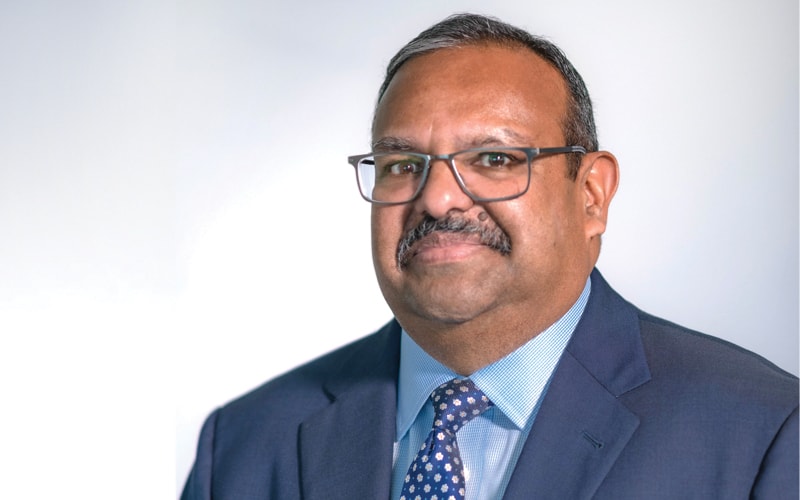Embracing the System

Ramesh Murthy is executive vice president and chief supply chain officer with Bob’s Discount Furniture, a rapidly growing omnichannel furniture retailer, with 164 stores across 24 states.
Responsibilities: Merchandise planning and demand forecasting, supply and inventory planning, inbound logistics, warehousing and distribution, final-mile delivery, supply chain technology process and analytics, and quality assurance.
Experience: Senior vice president, global planning and logistics, and vice president, global planning, both with Hasbro; head of retail and CPG consulting, North America, Tata Consultancy Services; vice president, business development, KKM; vice president, inventory replenishment, CVS Pharmacy; managerial and executive positions with Retail Solutions, Inc.; American Greetings, Arthur Andersen, E&Y, and Ciba Corning Diagnostics.
Education: M.S., biomedical engineering, Boston University; B.S., biomedical and electrical engineering, Rensselaer Polytechnic Institute.
My role at Bob’s Discount Furniture is a new one. We brought all the supply chain areas across our organization into one place, and I’m responsible for moving goods from start to finish.
A first step was getting everyone to work together. I started with a weekly call with the leadership team. I love making sure everyone knows exactly what everyone else knows.
Making It Right
The lightning rod that brought together every function was asking: ‘How do we make it right for the customer every time?’ If we promise we’ll get a product to a customer in one week, then we have to deliver on that promise.
To get there, we are working hard to make sure our in-stock levels are where they need to be. We are nine months into this effort. Our goods come from abroad in many cases. During and coming out of the pandemic, the thinking was, ‘just get your hands on whatever goods you can get your hands on.’
At some point, though, we have to prioritize. We have several thousand stock-keeping units (SKUs) across 75 suppliers, and all have finite capacity. We worked to help our suppliers prioritize our critical needs.
As a second step, we spent a lot of time this year building relationships with a large number of carriers to make sure that we have the capacity we need to move all our goods.
The third step was boosting visibility. That is a big challenge and a big opportunity for everybody in the supply chain.
In-Stock Levels
With these initiatives, we were able to drive our in-stock levels to where they needed to be. Today we’re about back to pre-pandemic levels. That has been exciting for us.
My career has been non-linear. I started as an academic scientist, and then moved to medical products, consulting, and consumer goods.
The academic world was great. I was studying movement and neuromuscular systems. It was really interesting and great scientific work, but it didn’t have that practical, pragmatic element to it.
In my first supply chain role, the challenge for me was pushing out of my comfort zone, trying new things, and figuring out how to get my arms around the system.
That’s where my engineering degree helps. Everything to me is a big, complex system, whether it’s running a supply chain or running a company.
What I love about supply chain is how it combines several cool things. It’s a large and complex system. It’s a big mathematical problem–‘I have to move these things from point A to point B and these are the variables I have to deal with’—so it has intellectual excitement to it. I also love that it’s practical.
And, finally, we serve customers. I love when someone receives our furniture and it feels good in their home.
Ramesh Murthy Answers the Big Questions
1. What activities help you in your role?
I am into music and enjoy figuring out how all the components and systems go together so I can get the outcome I want. If you mix and match different equipment, you get very different sounds. It’s Zen and also analytical.
2. What’s the best leadership or supply chain advice you received?
Early in my career I learned success is about having the best people you can get, as opposed to necessarily having the best plan or strategy. That was a big change for me. I had always felt you lay out the strategy and then hand it to people to go do it. It’s much better the other way around.
3. If you could time travel, what period would most interest you?
As an engineer and a bit of a nerd, I always wanted to be in the Renaissance period; to spend time with Da Vinci and watch how he invented. Today we’re in a period of technological creativity. It’s different from the pure physical creativity of that time.
